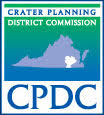
The purpose of the site plan requirements is to promote the orderly development of certain activities in the county and to insure that such activities are developed in a manner harmonious with surrounding properties and in the interest of the general public welfare. Most specifically, the site plan shall be used to review the project's compatibility with the environment; to review the ability of the project's traffic circulation system to provide for the convenient and safe internal and external movement of vehicles and pedestrians; to review the quantity, quality, utility and type of the project's required community facilities, and to review the location and adequacy of the project's provisions for drainage and utilities.
When Is A Site Plan Required?
For the following uses, a site plan shall be submitted to and approved by the zoning administrator:
- Multiple-family dwellings.
- Townhouses;
- Churches, schools, hospitals, nursing homes and public buildings, parks and playgrounds;
- Business and industrial buildings and development
- Manufactured/mobile home parks; and
- Residential Subdivisions and Planned Unit Developments (Ord. of 11-15-07)
What Are The Site Plan Specifications?
Every site plan shall be prepared in accordance with the following specifications:
- The scale shall not be less than one hundred (100) feet to one (1) inch.
- All site plans shall be twenty-four-inch by thirty-six-inch sheets.
- If the site plan is prepared on more than one (1) sheet, match lines shall clearly indicate where the several sheets join.
- Horizontal dimensions shall be in feet and decimals of feet to the closest one hundredth of a foot.
What Should The Site Plan Contain?
The site plan, or any portion thereof, involving engineering, urban planning, landscape architecture, architecture or land surveying shall be prepared by qualified persons. Final site plans shall be certified by an architect, landscape architect, engineer, land surveyor, general contractor or subcontractor licensed to practice by the commonwealth within the limits of their respective licenses. The site plan shall include, but not be limited, to the following:
- The proposed title of the project and the name of the engineer, architect, landscape architect, surveyor and/or developer; the name of the developer; and a signature panel for the zoning administrator's approval.
- The north point, scale, data, vicinity map and number of sheets.
- Existing zoning and zoning district boundaries on the property in question and on immediately surrounding properties.
- The present use of all contiguous or abutting property.
- The boundaries of the property involved by bearings and distances.
- All existing property lines, existing streets, buildings, watercourses, waterways or lakes, and other existing physical features in or adjoining the project.
- Topography of the project area with contour intervals of five (5) feet or less.
- The location and size of sanitary and storm sewers, gas lines, water mains, culverts and other underground structures, all overhead utilities and their supporting poles in or affecting the project, including existing and proposed facilities and easements for these facilities.
- The location, dimensions and character in construction of proposed streets, alleys, driveways and the location, type and size of ingress and egress to the site.
- The location of all existing and proposed off-street parking and loading spaces, indicating types of surfacing, size, angle or stalls, width of aisles and a specific schedule showing the number of parking spaces.
- Proposed locations of solid waste refuge storage and pick-up facilities.
- The location, height, type and material of all existing and proposed fences, walls, screen planting and landscaping details of all buildings and grounds.
- Provisions for the adequate disposition of surface water indicating location, size, type and grade of ditches, catch basins and pipes and connection to existing drainage systems.
- Provisions for the adequate control of erosion and sedimentation, in accordance with the county erosion and sedimentation control ordinances.
- Proposed finished grading, by contour, supplemental where necessary by spot elevations.
- The location and limits of one hundred year floodplains and wetlands (tidal and non-tidal).
- The location, character, size, height and orientation of proposed signs.
- The location and dimensions of proposed recreation, open spaces and required amenities and improvements for residential development.
- Any necessary notes required by the zoning administrator to explain the purpose of specific items on the plan.
- The zoning administrator may request additional information other than what has previously been stated, such as traffic and school impact studies and economic and/or environmental impact reviews when deemed necessary to protect the health, safety and general welfare of the citizens of the county.
Procedures
- Pre-construction conference. All applicants under this article are encouraged to request a pre- application review conference. The purpose of the conference is to discuss the basic site plan, off-street parking, signs and other county ordinance requirements, utilities and drainage, and to consider preliminary features of the proposed development as they relate to this article.
- Review and approval of final site plan. The application for a final site plan shall be subject to the following:
- Six (6) copies of the final site plan shall be submitted to the zoning administrator for review. The zoning administrator shall have up to one hundred twenty (120) days to circulate the plan to the relevant departments, boards and/or commissions; for written comments, and to notify the applicant of the action taken, which may be approved, approved subject to conditions or disapproved.
- An applicant may appeal the decision of the zoning administrator within ten (10) days, in writing, to the county planning commission.
When Does My Approved Site Plan Expire?
1. An approved site plan shall expire and become null and void if no building permit has been obtained for the site in twelve (12) month after the final approval.
2. The zoning administrator may, at the applicant's request, and prior to the expiration grant an extension of six (6) months.
Want To Make Amendments To An Approved Site Plan?
If it becomes necessary for an approved site plan to be changed, the zoning administrator shall, at the applicant's request, either administratively approve an amendment to the site plan or, if the change is major, require that a new site plan be drawn and submitted for review and action in accordance with this article.
What To Expect After The Issuance Of Your Permits?
- Inspections shall be made during the installation of off-site and on-site improvements by the zoning administrator or his designated representative in their area of responsibility to insure compliance with the approved site plan.
- The owner or developer shall provide adequate supervision at the site during installation of improvements required by the site plan and shall make one (1) set of approved plans available at the site at all times that work is being performed.
Select the button below to access the Geographical Information System.
Physical Address:
20135 Princeton Road
Sussex, VA 23884
Mailing Address:
Post Office Box 1397
Sussex, VA 23884
Office Hours:
8:00a.m. to 4:30p.m. M-F
Phone:
(434) 246-1043
Fax:
(434) 246-2175









 Made in the U.S.A.
Made in the U.S.A.